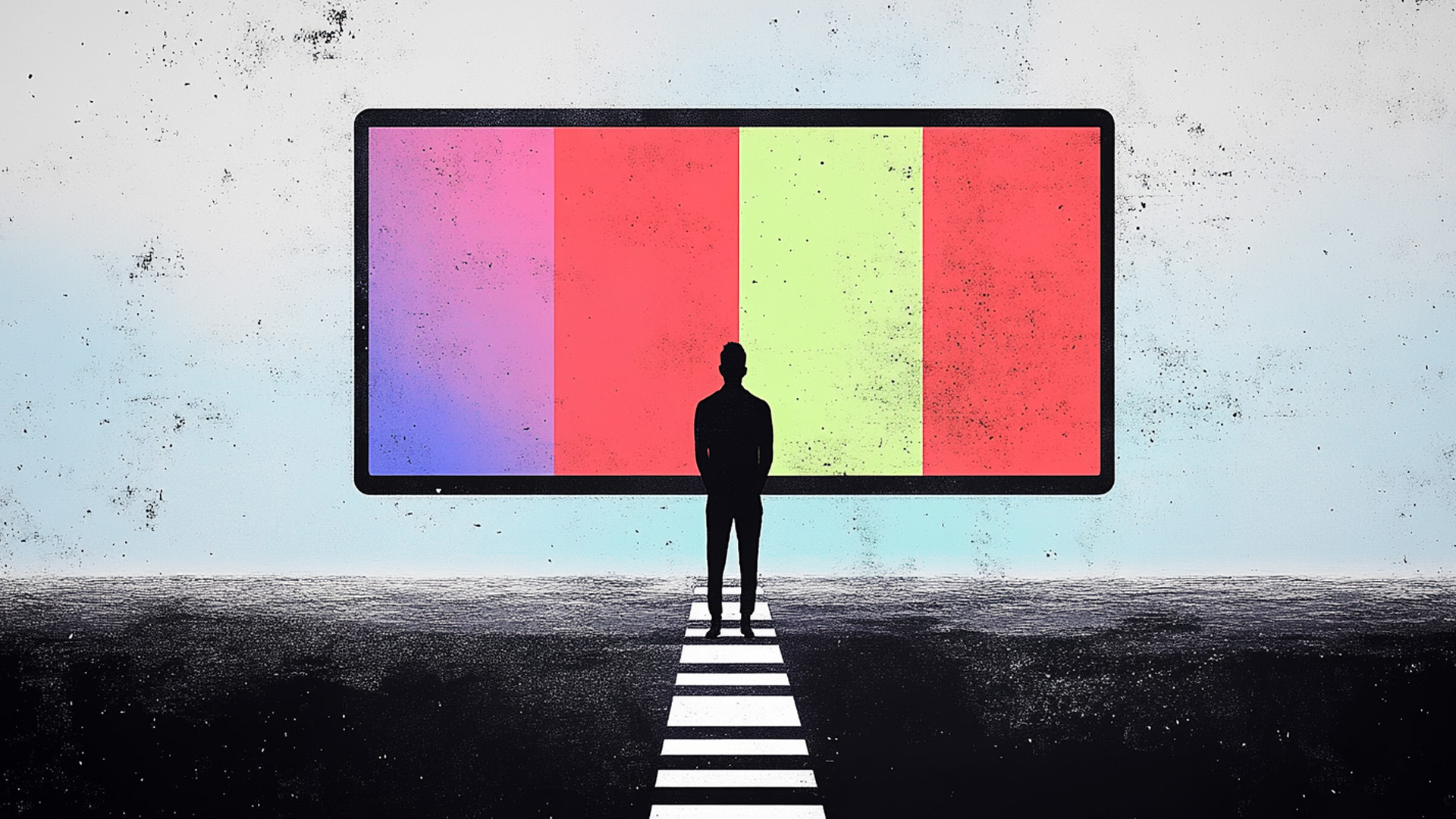Analysis: Economic realities challenge streamings ascent in 2025

Subscribe to NCS for the latest news, project case studies and product announcements in broadcast technology, creative design and engineering delivered to your inbox.
As we enter 2025, a complex picture emerges of an industry in transition.
Streaming’s continued ascendance coincides with evolving consumer behaviors and economic pressures–leading to challenges and opportunities for the media and entertainment industry.
Recent data notes a market where viewers are increasingly sophisticated in managing their entertainment options while platforms race to adapt their business models. This dive into the data explores how the industry is evolving to meet these challenges and what lies ahead.
Streaming achieves dominance, but new challenges emerge
For the first time in industry history, streaming has surpassed traditional television as viewers’ default choice for entertainment.
Hub Entertainment Research reports that 46% of viewers now turn first to subscription video-on-demand (SVOD) services, compared to 38% who default to live TV. According to November data from Nielsen’s The Gauge, this milestone comes as streaming captures a record 41.6% share of television viewing time.
The streaming landscape continues to evolve, with Prime Video, Netflix and Disney+ in strong positions. These services, along with Hulu, rank first in data from Parks Associates and make up the top spots in The Gauge.
This hierarchy shift reflects the impact of content strategies and the growing importance of ad-supported tiers. However, this brings new complexities.
The average U.S. household now juggles 13 different entertainment sources, the highest number since tracking began in 2021, according to Hub’s “Battle Royale” survey. Younger viewers under 35 manage an even higher average of 16 sources. Despite this abundance, consumers consider only half of these sources “must-have,” reflecting an increasingly discerning audience.
Consumer budgets reshape entertainment choices
Economic pressures are reshaping how consumers approach their entertainment options.
Reviews.org’s latest analysis finds that Americans spend an average of $272.90 monthly on combined internet, mobile, streaming and cable services. Streaming services account for $42.38 of this total, while cable TV costs remain significantly higher at $88.94.
In response, consumers are adopting new behaviors:
- Ad-supported viewing: Parks Associates reports that 57% of users on major streaming platforms now choose ad-supported tiers, a significant shift in consumer acceptance of advertising.
- Subscription cycling: Antenna data found that 34.2% of premium streaming subscribers reactivate canceled services within 12 months, up from 29.8% in 2022.
- Reduced spending: Overall entertainment spending has dropped by $30 year-over-year.
Streaming platforms have adapted to these changes with retention strategies, such as subscription pausing, which Hulu and Netflix first introduced. These approaches recognize that a temporary cancellation doesn’t necessarily indicate a permanent loss.
The rise of alternative entertainment sources
Traditional sources now represent only part of the entertainment ecosystem, particularly for younger audiences.
Social media influencers have emerged as significant news sources, with Pew Research reporting that 37% of adults under 30 rely on influencers for news. Platforms like YouTube, Instagram and X (formerly Twitter) are key distribution channels, with two-thirds of news influencers operating across multiple platforms.
Gaming and short-form video platforms also continue to capture audience attention. Younger demographics now engage with an average of 2.4 gaming sources and 3.6 social/short-form video platforms.
Notably, The Gauge data shows YouTube accounted for 10.8% of monthly TV viewing in November 2024, up from 9.0% in 2023, reflecting its dominance even over traditional streaming platforms.
In total, one billion hours of content was streamed daily from YouTube to TV, with sports content viewed on TV growing 30% year over year.
Television’s live evolution
While streaming dominates headlines, traditional television continues to evolve to survive.
Local broadcasters continue to tweak programming and offerings while cable networks are shuttering or preparing for major consolidation.
Live sports and news remain key drivers of traditional viewing, with Nielsen reporting that sports events like the World Series still draw massive audiences. The Dodgers’ victory over the Yankees in Game 5 attracted 18.2 million viewers, making it the sixth most-watched broadcast telecast of the measured interval.
According to J.D. Power, virtual multichannel video programming distributors (vMVPDs) like YouTube TV are gaining ground and outpacing traditional cable providers in customer satisfaction. The report shows that streaming services received an overall satisfaction score of 625 out of 1,000 points, compared to 524 for traditional TV providers. The most striking difference appears in the “value for price paid” category, where streaming services lead by 140 points.
This satisfaction gap is reflected in costs, with live TV streaming services averaging $75 monthly compared to $120 for cable and satellite services. YouTube TV leads the streaming segment with a satisfaction score of 651, followed by Hulu + Live TV at 635.
Adaptation as a survival strategy
In the face of economic pressures and shifting viewer expectations, the media industry must embrace innovation to ensure its survival. As 2025 begins, platforms are doubling down on strategies that address consumer demand for value and flexibility.
TiVo’s research shows that 64% of consumers now use ad-supported subscription video-on-demand (AVOD) tiers, up 16 points from the previous year. Bundling has also emerged as a strategy, with broadband providers packaging streaming services to retain subscribers. Research indicates 62% of respondents are more likely to maintain internet service when additional streaming services are included.
Sports content, a key driver of traditional TV, is rapidly migrating to streaming platforms. FAST (free ad-supported streaming television) platforms report a 150% increase in global sports channel viewership, signaling the potential for new audience engagement and revenue opportunities.
Connected TV (CTV) engagement continues to rise, with average daily viewing hours increasing 5% year over year in Q3 2024. However, platforms are striving to balance ad loads and viewer experience. Typical ad breaks now average two minutes, significantly shorter than traditional cable TV.
Navigating the future of streaming
The industry’s future hinges on adapting to evolving consumer behaviors while developing sustainable business models.
Key trends shaping the future include the rise of ad-supported models, where shorter, targeted ads will play a central role; the growth of bundling and partnerships to simplify consumer choices; and the migration of live sports to streaming, which offers unique engagement opportunities.
Technological innovation, such as AI and new user experiences, will redefine audience interaction and content delivery, while international markets present untapped growth opportunities.
Success will require platforms to offer compelling content, competitive pricing and flexibility to retain increasingly discerning viewers. As the boundaries between gaming, social media and traditional video content continue to blur, the most innovative and agile companies will lead the next chapter of entertainment.
Subscribe to NCS for the latest news, project case studies and product announcements in broadcast technology, creative design and engineering delivered to your inbox.







tags
Ad-Supported Video on Demand (AVOD), Connected TV, Free Ad-Supported Streaming Television (FAST), MVPDs, streaming, Streaming OTT, Subscription Video On Demand (SVOD), SVOD, vMVPDs
categories
Heroes, Market Research Reports & Industry Analysis, Streaming, Voices